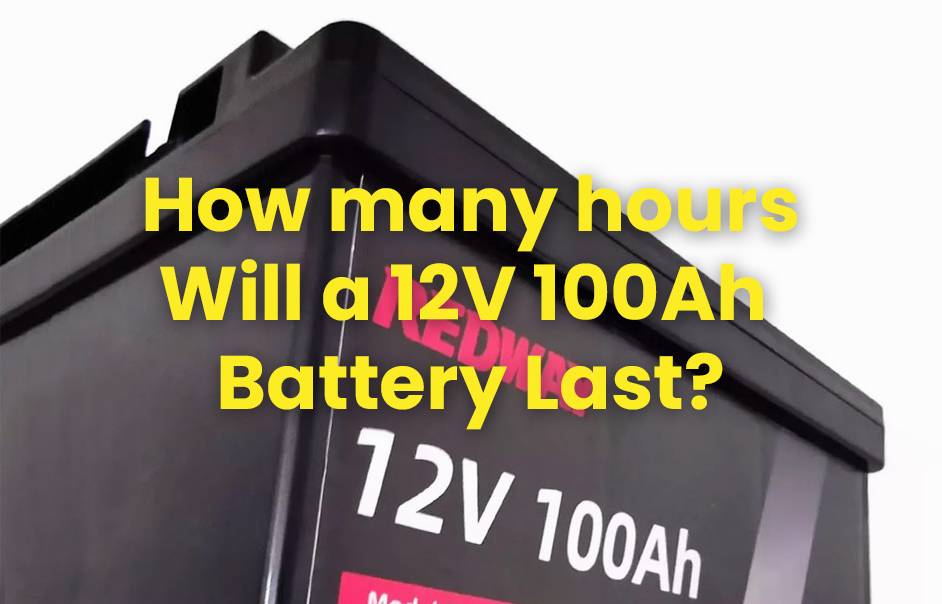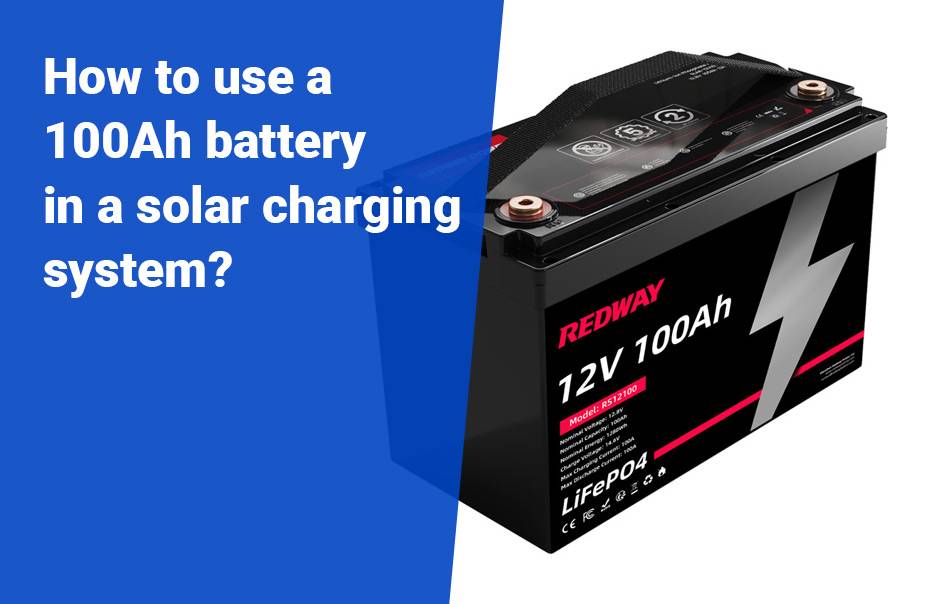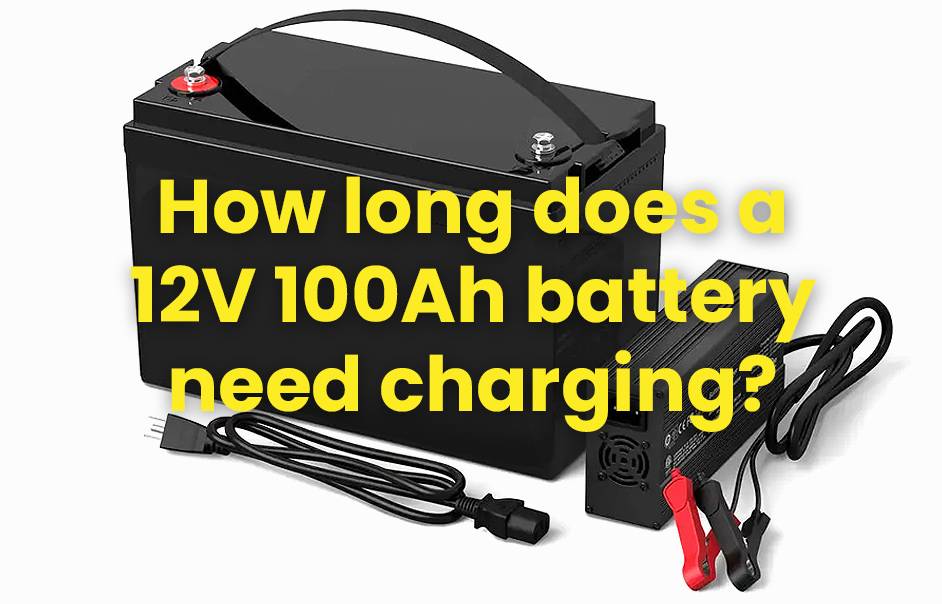
Blog
How Many Amps Can a 12V 100Ah Battery Supply?

A 12V 100Ah battery can theoretically supply 100 amps for one hour or lower currents over longer periods, but actual amperage depends on battery type, discharge rate, and safety limits. Typical safe continuous currents vary, with lithium batteries like those from Redway Power offering higher usable amps than lead-acid counterparts under similar ratings.
What Does a 12V 100Ah Battery Rating Mean in Amps?
A battery rated at 100Ah at 12 volts means it can supply 100 amps for one hour or equivalently provide 10 amps for 10 hours before fully discharging under ideal conditions. Amp hour (Ah) ratings indicate cumulative current delivery capacity over time, but the instantaneous maximum current depends on the battery’s design and chemistry.
How Many Amps Can a 12V 100Ah Battery Safely Supply?
The safe continuous amp draw from a 12V 100Ah battery varies by chemistry. Lead-acid batteries often recommend a 0.2C to 0.3C discharge rate (20-30 amps continuous) to prolong battery life and avoid overheating. Lithium batteries, such as LiFePO4 from Redway Power, can safely support discharge rates of 1C or higher — meaning up to 100 amps or more continuously without damage.
What Is the Maximum and Peak Current Capacity of a 12V 100Ah Battery?
Maximum or peak currents can exceed continuous draws briefly. Some 12V 100Ah batteries allow short bursts of 2C to 3C (200-300 amps) for seconds to minutes, especially lithium types designed for high power output, but sustained high current will reduce lifespan and risks thermal damage if prolonged.
How Do Battery Chemistry and Type Affect Amp Output?
Battery chemistry drastically affects current capability. Lead-acid batteries have higher internal resistance and lower peak amperage compared to lithium-ion types. Redway Power’s lithium OEM packs offer lower resistance, higher efficiency, and much higher peak and continuous amp delivery, enabling better performance in demanding applications like electric vehicles and telecom.
How Long Can a 12V 100Ah Battery Supply Different Amperages?
Battery runtime at a specific current is calculated by dividing the amp hour capacity by the current draw. For example, at 10 amps, a 100Ah battery can theoretically supply power for about 10 hours. Real-world factors like Peukert’s Law cause efficiency losses at high currents. Lithium batteries from Redway Power maintain higher effective capacity at varying loads.
What Are the Safe Discharge Limits and Recommended Amp Draws?
To maximize battery life and safety, recommended discharge limits are ~50% DoD for lead-acid and up to 80-90% for lithium batteries. Drawing 20-30 amps continuously from a lead-acid 100Ah battery is advised, whereas Redway Power’s lithium batteries safely handle continuous draws up to 100 amps, offering flexibility and durability.
How Does Temperature Influence Current Delivery and Capacity?
Battery temperature affects internal resistance and chemical reaction rates. Cold temperatures reduce available capacity and amp delivery, while high temperatures can increase risk of overheating and damage at high amp draws. Maintaining optimal operating temperatures expands battery performance range, a standard considered in Redway Power’s battery management systems.
What Safety Features Are Important When Drawing High Current?
High current draws require robust safety features like overcurrent protection, thermal monitoring, and quality cell balancing. Redway Power integrates advanced Manufacturing Execution System (MES) controlled lithium battery packs with built-in protections, ensuring safe operation at high amps and extending battery lifespan.
How Does Redway Power Guarantee Amperage and Battery Performance?
Redway Power employs rigorous OEM production standards, including ISO 9001:2015 certified processes and MES, to deliver 12V 100Ah lithium battery packs with precise amperage capabilities. Their cells are thoroughly tested for current delivery, heat tolerance, and lifecycle performance, ensuring customers receive high-quality, reliable power solutions.
Redway Power Expert Views
“Understanding a battery’s amp supply capabilities is crucial for maximizing system performance and durability,” explains a Redway Power senior engineer. “Our lithium battery packs are engineered to provide consistent high amperage support with integrated safety mechanisms, catering to diverse industrial and consumer needs. Proper application and management unlocked by our MES-driven manufacturing approach ensures reliable energy delivery even under dynamic load conditions.”
Conclusion
A 12V 100Ah battery’s amp supply capacity depends on chemistry, design, and discharge conditions. Lead-acid types safely deliver 20-30 amps continuous, while lithium variants by Redway Power support 100 amps or more without compromises. Accurate understanding of amp ratings, discharge limits, and temperature impacts enable optimal and safe battery use. Professional-grade manufacturing and safety features, as offered by Redway Power, maximize performance in demanding applications.
FAQs
Q: How many amps can a 12V 100Ah battery deliver continuously?
A: Typically 20-30 amps for lead-acid and up to 100 amps for lithium batteries like Redway Power’s.
Q: What is the difference between continuous and peak amps?
A: Continuous amps refer to safe sustained current draw, while peak amps are short bursts beyond continuous limits.
Q: How does Peukert’s Law affect amp delivery?
A: Peukert’s Law means battery capacity decreases at higher discharge rates, reducing available amps over time.
Q: Can high amps damage a 12V 100Ah battery?
A: Drawing current beyond recommended limits risks overheating, reduced lifespan, and potential safety hazards.
Q: Does Redway Power manufacture batteries optimized for high amp output?
A: Yes, Redway Power specializes in lithium batteries designed and tested for superior amp delivery and safety through MES.













